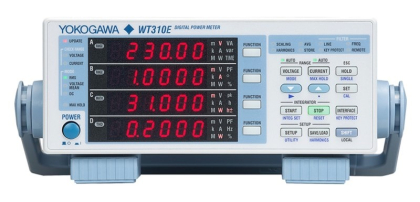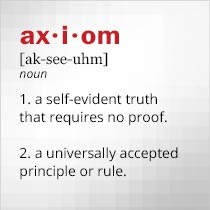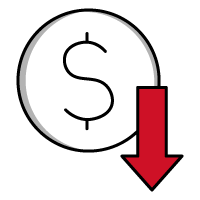Measure the Efficiency of Renewable Energy Grids
April 04, 2023
 |
Energy is essential for most homes and businesses and its generation has long depended upon the burning of fossil fuels such as oil and natural gas. But global supplies of such fuels are limited and the process of converting them to electric power adds harmful gases, such as carbon dioxide (CO2), into the atmosphere. Energy can be produced from a variety of sources other than fossil fuels, including solar power, wind turbines, hydroelectric power plants, geothermal energy (using heat from the Earth’s core), even from the movement of oceanic water from regular tidal changes. One of the newest forms of renewable energy comes from burning biomass materials, which are plants and animals which can be burned as fuels, to generate energy. Ethanol is an example of a biofuel. In some areas, farmlands formerly used to grow food crops are being converted to grow grains and other plants that can be harvested for energy.
Efficient use of power from renewable energy sources requires its storage and distribution, typically by means of power grids. For several years, major utility firms have been evaluating their transmission and distribution assets to include investments in renewable energy as part of their modified power grids. Developing and maintaining these power grids requires regular voltage and current measurements on AC and DC power lines and junctions. Fortunately, the latest power analyzers and grid simulators combine the test speed and accuracy needed to ensure the highest-quality power from renewable energy sources and the power grids they support. Analyzers and meters characterize power from a device under test (DUT) while grid simulators perform measurements of voltage, current, and power while also serving as a precision power supply for the DUT (in place of what would have been energy supplied by the power grid). A regenerative grid simulator can precisely tune the power supplied to a DUT while returning power generated or unused by the DUT during testing to the power grid with minimal dissipation of the energy as heat.
Modern power grids tend to be dynamic in nature, with a diversity of power sources. The number of power sources in any power grid will grow to increase capacity as demand for energy increases. Homeowners with rooftop solar panels, for example, who generate energy beyond their own needs may sell or trade the power to utilities and serve as a small source within the total power grid. Any additional energy channels within a power grid must be regularly tested to maintain energy supply quality.
Another example of the dynamic nature of power grids is the growing number of electric vehicles (EVs) and the need for electric charging stations to supply energy to the rechargeable battery systems that power these vehicles. While portable EV charging services that are not part of a power grid are available, most EV charging will take within the infrastructure of power grids and these charging stations and the drivers who use them will depend on the reliability of power grids and their renewable energy resources.
Gauging the Grid
Measuring and maintaining the quality of renewable energy sources and the power grids they feed requires testing equipment with a combination of accuracy and speed. Large volumes of measurements are often needed for quality control of power lines and electronic devices, especially in production, but those measurements must offer high consistency power grids must perform reliably through storms and other changing environmental conditions. Basic measurements of AC and DC electric power in power grids include voltage, current, efficiency, power, and total harmonic distortion (THD), with accuracy within a fraction of one percent. Flexible power analyzers and meters should be capable of evaluating these parameters for numerous power-line configurations, such as single-phase and three-phase lines.
For simplicity and speed, many power analyzers and meters incorporate automatic measurements such as “pass/fail” measurements in which a user defines parameter values for the two cases. Such measurements are aided by digital signal processing (DSP) and analysis of digital data versions of measured results. Required voltage and current measurement ranges differ according to test location and applicable measurement standards, but wide ranges enable single units to perform across a broad expanse of renewable energy sources and power grids.
The Yokogawa WT310E digital power meter packs impressive testing capabilities into a compact, easy-to-use unit. It is a single-input unit in a readily transportable half-rack enclosure that reads power with ±0.3% total accuracy and ±0.15% typical accuracy and can measure all basic current and voltage parameters, including peak values, at frequencies from 0.1 Hz to 100 kHz. It analyzes current to 40 A RMS and voltage to 600 V. It includes USB, GPIB, Ethernet, and RS-232C interfaces for computer control via appropriate test software for integration into automatic test systems. Its 100-ms data update rate supports high-volume production testing and its “MAX hold” function helps to capture peak values. Several functions aid in testing grid-connected devices, such as the capability to measure charge/discharge rates in watt-hours (±Wh) or ampere-hours (±Ah) when characterizing EV batteries and rechargers.
The Chroma 66204 digital power meter is a versatile testing tool for power grids and interconnected devices and components. It is a half-rack mainframe that accepts as many as four modules for as many as four measurement channels. It complies with many power test standards, including IEC 62301 and EN 50564. The meter performs all essential current, voltage, and power measurements, including power efficiency and THD (measuring voltage and current as high as the 50th harmonic) orchestrated by easy-to-follow graphical user interface (GUI) software. The power meter operates with various wiring configurations, including two-, three-, and four-wire lines with single- and three-phase power. Standard units analyze voltages as high as 600 V; an option is available to raise the ceiling to 1200 V RMS. (For more on power meters and analyzers, see Axiom’s earlier blog, ”When Does an Analyzer Make More Sense Than a Meter?”)
Regenerative AC/DC grid simulators can be thought of as precision-controlled power supplies capable of duplicating the supply conditions experienced by any grid-connected high-power electronic DUT, including inverters and EV battery chargers. As an example, the NH Research 9410-12 is a member of the modular 9410 family of regenerative grid simulators in which modules are added to boost output power. As many as eight 12-kW (24-kVA) modules can be added to provide maximum output power levels to 96 kW (192 kVA). The four-quadrant grid simulators return power not used during testing to the power grid, allowing users to choose parameters for AC and DC power to be returned. These versatile regenerative grid simulators work with single-, two-, and three-phase configurations and offer flexible control, with an external computer or a built-in. GUI shown on a 9-in. touch panel display.
The NH Research 9510-100 regenerative grid simulator is also modular and scalable, but larger, capable of measuring AC power from 100 kW to 1.2 MW, through the addition of 50-, 75-, and/or 100-kW modules. This robust tester is ideal for evaluating many high-power grid-tied products according to a wide range of test standards, including IEEE 1547, IEC 62116, and UL 1741SA. Similarly, the Chroma 61860 regenerative grid simulator also uses a modular approach to achieve output levels to 60 kVA with output voltages of 0 to 300V at frequencies of DC or 30 to 100 Hz.
When generous test power is required from a benchtop unit, the Chroma 61815 regenerative grid simulator provides as much as 15 kVA, allowing excess power during testing to be returned to the power grid. Capable of single- and three-phase operation, the compact unit performs a wide range of units under local (5-in. touch-screen display) or computer control USB and LAN interfaces), including current, voltage, frequency, and power with ±0.1% accuracy.
Maintaining the highest quality and reliability of the power grids throughout the planet is not trivial and will depend on testing units capable of making accurate measurements day after day. The power analyzers, meters, and grid simulators describe as examples are just a few of the measurement solutions available from Axiom Test Equipment (https://www.axiomtest.com). Power grids are complex networks of supplies and consumers, with many subsystems, such as EV charging stations, adding regularly to the complexity. To assist with installation, maintenance, and quality control, future Axiom Test blogs will take a closer look at some of the major power subsystems within today’s power grids, including EV carports and battery chargers.
Back to BLOG








